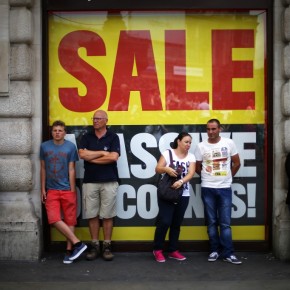Native formats will take over digital channels this year, according to J.P. Morgan analysts. That mean ads in sheep’s clothing will dominate the digital flock.
So let’s call the roll of some not-so-good shepherds.
From MediaPost:
AOL, MillerCoors Sign Native Ad Pact, ‘Brew Pub’ Aimed At Male Millennials
Forget banners, pre-rolls or anything that looks like “advertising.” Brands want ownership of “editorial” content — and with big bucks at stake, publishers are
playing along.
Take the new native ad pact between AOL and brewing giant MillerCoors, which is worth about $5 million, according to industry sources . . .
AOL has agreed to produce about 350 pieces of original content — including 100 videos — before the end of the year. At Miller’s request, each piece will appeal to male millennials, and plug Miller Lite, Coors Lite, Blue Moon, or Redd’s Apple Ale.
The so-called Brew Pub Newsroom will “span AOL properties including Huffington Post, Huff Post Live and the male-focused Mandatory.com.”
Because stealth marketing is mandatory, of course.
But it’s not just fake newsrooms that are trafficking in this sleight-of-ad. It’s real ones too. The New York Times this week launches NYT Now, a paid digital product supported by native advertising.
From Gigaom:
[NYT Now is] available on the web and as an iOS app for iPhone and iPod touch, and it will cost $8 every four weeks. (A regular New York Times digital
subscription starts at $15 every four weeks for website and smartphone access and goes up to $35 if you want it on both a smartphone and tablet.) It offers a “curated selection” of content from the New York Times, including articles, videos, infographics and slideshows. It also aggregates some content from around the internet.
The NYT Now iPhone app is also the paper’s first native advertising-supported product. The NYT is calling its native ads “Paid Posts,” and they will soon be expanding to the NYT’s other apps.
Right – once the Old Grey Lady opens the kimono, there’s no way it closes again.
Then again it was ever thus, Jack Shafer says in his review of Cynthia B. Meyers’ new book, A Word from Our Sponsor: Adman, Advertising, and the Golden Age of Radio. Shafer, a Reuters media critic, writes:
[A]dvertisers have sought to nullify ad-avoidance by fusing their messages directly into content — essentially creating ads that can’t be avoided. Known within the industry by such euphemisms as “sponsored content,” “native advertising,” “content marketing” and “branded content,” they have now been embraced by nearly all Web publishers, including the Wall Street Journal and the New York Times.
But these newfangled advertorials have multiple antecedents in media history. This bastard form was so pervasive in late nineteenth-century newspapers that the journalist Charles A. Dana campaigned against them: “Let every advertisement appear as an advertisement; no sailing under false colors.” At the turn of the century came such advertorials as the Michelin Guides and Jell-O recipe books, which encouraged the purchase of a product by providing a playbook for its consumption. Later came the oblique integration of advertising into entertainment, as radio and TV shows named themselves after their sponsors (Kraft Music Hall and Bob Hope Presents the Chrysler Theatre) or they subtly placed products, such as cars and other goods, into the stories of programs in exchange for money.
Just to bring us full circle: Shafer quotes this – yes – New York Times piece from last fall: “The goal is to transform prosaic product advertising, which consumers can now easily avoid or ignore, into compelling content they deem informative or entertaining.”
Sorry – the hardtracking staff is not amused.
John R. Carroll is media analyst for NPR's Here & Now and senior news analyst for WBUR in Boston. He also writes at Campaign Outsider and It's Good to Live in a Two-Daily Town.
John R. Carroll has 305 post(s) on Sneak Adtack

1 comment
The Sneak in Review: What’s Brewing in StealthWorld | Campaign Outsider says:
Mar 31, 2014
[…] the rest at Sneak Adtack. Share this:ShareLike this:Like […]